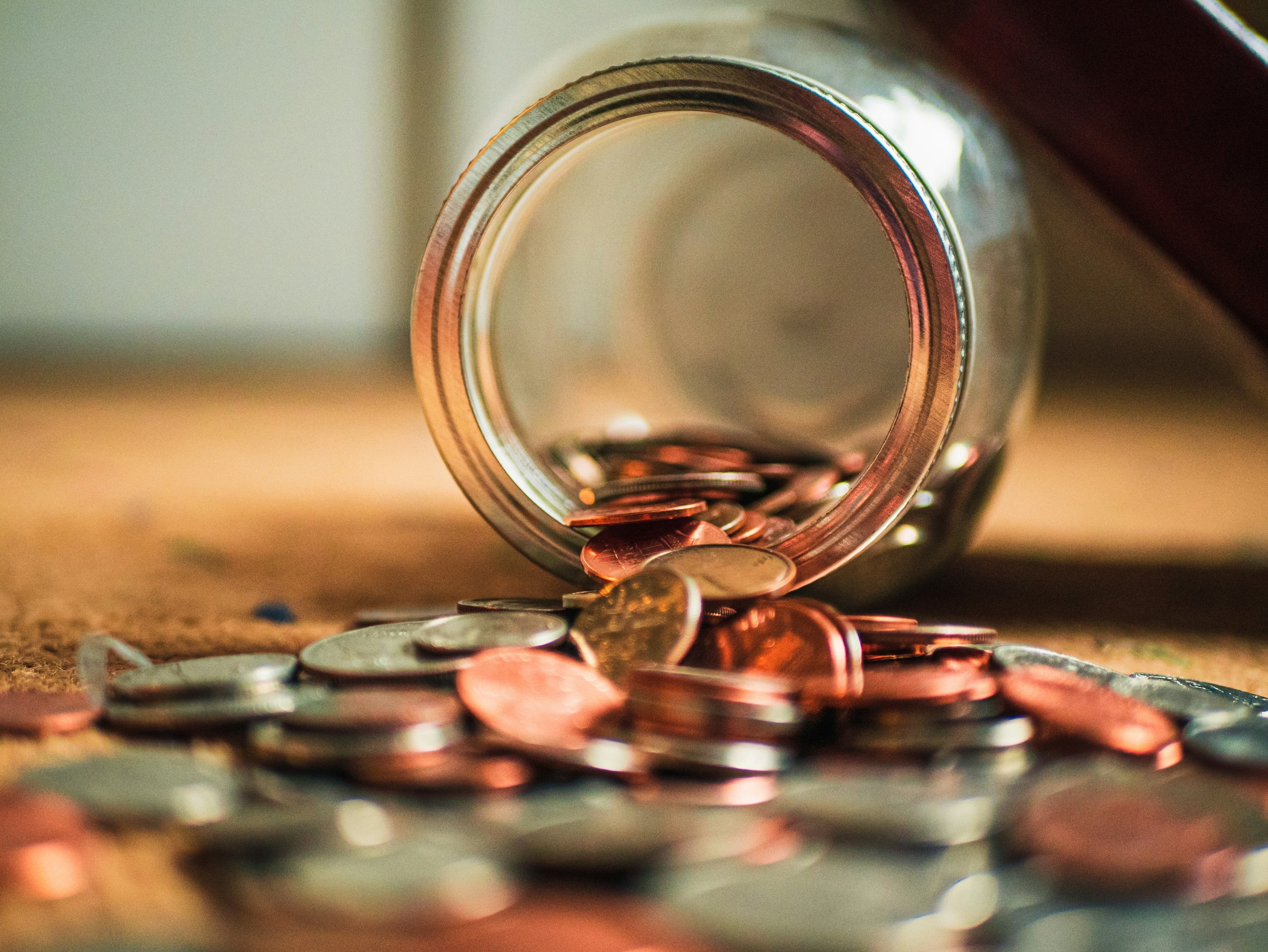The County’s Basic Income Pilot program provides some economic relief and ongoing mentorship to youth who transitioned out of foster care
Editor’s note: To protect a source’s identity, The Intersection has agreed to change her name to “Luana.” This story has been funded by a grant from The Solution’s Journalism Network. Delonte Harrod is a HEAL Fellow, where he is reporting on youth and mental health.
“ You don’t think [$800] is much at first. “Then you think about how it does help you.”
Not long ago, Luana had only enough money to buy food for her sibling. Her younger sibling lived with her. For Luana, based on the situation, it was logical to give the food to her sibling rather than eat it. There wasn’t enough. It’s not clear how often this happened — but she thinks it has resulted in a recurring stomach problem. “I need to make a doctor’s appointment for that,” she told me. However, things have changed. Her economic life has somewhat improved. Now, Luana has money to purchase enough food so that she too can eat. “I am no longer sacrificing one thing for the other — and that makes me feel calmer,” she said.
In 2024, Luana was accepted into the Prince George’s County basic income pilot program for youth who have transitioned out of foster care. The program not only provides financial support but also mentorship that helps them to navigate the road ahead.
“ You don't think [$800] is much at first,” explained Luana, who was once in the foster care system in Prince George’s County. “Then you think about how it does help you.”
The Prince George’s County basic income pilot program was spearheaded by Prince George’s County Changemakers, a local social justice non-profit organization. Janna Parker, a native and resident of the county, is the executive director of the organization. She, and other activists, led the charge. Parker said the county is mainly known for its “vibrant and resilient communities.” However, alongside these vibrant, high-income neighborhoods, exist food apartheid communities, poverty, and communities that lack access to medical care.
“This combination of social conditions aggravates the racial wealth gap within our resident population,” said Parker. “The racial wealth gap is a phenomenon that speaks to the wealth gap between different races, particularly those within the white population that generally have more access to wealth than those within the black and brown population.”
PG Changemakers and other community members' activism led to Krystal Oriadha, District 7 council member, introducing bill CB-018-2023 to the county council in 2023. The bill’s documents show that the basic income program was fashioned after Stockton, California’s SEED project. That initiative gave 125 people $500 each for 24 months. However, it wasn’t only Stockton that provided the example. Montgomery County, Baltimore City, and Alexandria, Virginia all have basic income programs that yielded some positive results. In short, the stipends have provided some stability for its participants. The Greater Washington Community Foundation, Meyer Foundation and the Prince George’s County Council collectively funded the 2 year pilot program with $4 million. According to the Urban Institute’s recent data on the pilot program, participants were recruited from Prince George’s County neighborhoods with the highest homeownership and income disparities (Suitland, Temple Hills, Capitol Heights, District Heights, and Hyattsville). Nearly 60% of the youth were making less than $10,000 per year, according to the data. Parker said the pilot program is another way of providing residents with “extra resources to help them move into a different fiscal, social, and/or emotional space.”
The program focuses on two Prince George’s County populations: senior citizens (60 years old and older) and youth (18-24 years old) who have transitioned out of foster care. The program has 125 senior citizen participants and 50 youth who have aged out of foster care. Prince George’s County is just one of many places in the U.S. that have a basic income program for youth who have transitioned out of foster care. In order to qualify for the basic income, youth would have needed to transition out of care between 2020-2022, during the spread of COVID-19, and be 18-24 years old. Yolanda Johnson, the executive director of Prince George’s County CASA, said they received hundreds of applications. The Prince George’s County pilot program pays each participant $800 a month for two years. Luana and others received their first stipend in April 2024.
Former Foster Care Youth Need Opportunities
“According to the Maryland Department of Human Services, there are about 3,800 children in foster care. In Prince George’s County there are about 380 children in foster care or out of home care. ”
Children are often placed in foster care due to various forms of abuse, more specifically neglect, in the home. Generally speaking, the foster care system is disproportionately composed of Black and Brown children (this includes indigenous children). “The underlying reasons why children enter out-of-home care often reflect systemic challenges and unmet family needs,” wrote Lilian Price, press secretary for Maryland Department of Human Services, in an email. “In many cases, families lack access to the support and resources needed to stay safely together. The Maryland Department of Human Services (DHS) makes every effort to work with parents to mitigate safety issues. When it is unsafe for children to remain with their parents, children enter out-of-home care through a judicial process.”
In 2021, using census data, Maryland Matters, a non-profit news organization, reported that 60% of the children in foster care were Black, a significant decrease from 75% percent in 2006. White children comprised 23%, an increase from previous years and Latinx children were at 9%, an increase from 2%, of the foster care system. In 2021, nearly 60% of Black children were in Maryland’s foster care system on their 19th birthday. According to the Maryland Department of Human Services, there are about 3,800 children in foster care. In Prince George’s County there are about 380 children in foster care or out of home care.
Starting around 14 years old, Prince George’s County and state social workers, and volunteers meet with youth to inform them about educational opportunities, housing, jobs, mental health resources, etc. The goal is to prepare them for life outside of foster care or “out of care.” This is not to mention that they are still required to attend school while in foster care. However, due to the impact of various forms of abuse, and sometimes ongoing destabilization in the foster care system, youth struggle post foster care.
According to the Annie E. Casey Foundation’s 2023 study , youth who transition out of foster care experience housing instability, joblessness, academic difficulties, early parenthood, and substance use. To remedy these problems, it concludes that this population needs more access to resources on a local level (housing, banking, educational resources, peer networking groups, etc.).
The funds, for youth that have transitioned out of foster care, are distributed through the Greater Washington Foundation’s Thrive Prince Prince George’s County initiative to Court Appointed Special Advocates (CASA), a national nonprofit that works with children that have been abused in Prince George’s County. The organization partners with the juvenile court system and trains community volunteers to work one-on-one with youth in foster care, according to Jeanmarie Graves, community initiatives and emerging adult specialists at CASA, and Johnson. The national organization was started by John Soukup, a Seattle juvenile court judge, in 1976. In short, he believed that children needed someone to advocate for them in court.
Johnson said the organization's core ethics are to provide care for children who are in the foster care system. “Their best interest is the core of our decision making,” she explained. Johnson said the pilot program became a way for them to engage youth post foster care and to extend care towards them.
Thrust Into Uncertainty
Luana grew up in an abusive home. Her parents, she said, would hit them. Those encounters, sometimes, resulted in them bleeding and hospital visits. “We…[thought] it was normal,” she said. “I don’t think it’s normal anymore.” Additionally, her parents did not steward their finances well, which resulted in them living paycheck to paycheck. For various reasons, and through Luana’s self advocacy, social services conducted an investigation. Luana, along with her siblings, was removed from the home.
While in the foster care system, Luana came in contact with CASA volunteers. With their help, she graduated from high school. Eventually, she transitioned out of foster care. She found a part-time job, and a place to live, but economically she was still poor.
“I was living the way my parents lived – paycheck to paycheck. And that doesn’t really help you. It doesn’t help you to grow. It doesn’t do anything…[but] make you mad and say, ‘I’m tired. I don’t know what else to do,’ ”
“I was living the way my parents lived – paycheck to paycheck. And that doesn't really help you. It doesn’t help you to grow. It doesn’t do anything…[but] make you mad and say, ‘I’m tired. I don’t know what else to do,’” Luana said.
When applications for the basic income pilot program opened, in 2023, Luana found it online. Graves said a CASA volunteer – who had worked with Luana while in foster care – encouraged her to apply because she met the qualifications. Luana said she felt like it wasn’t for her, and believed someone else could use the resources. With a little more encouragement, she finally applied – and became one of the 50. For Luana, the money has helped in some very practical ways.
At one point, a sibling needed a retainer. Due to her limited life experiences, she was oblivious to the cost of a retainer. So she searched the internet and found that it cost $1000. She used some of the stipend to pay for the retainer.
Furthermore, Luana sees a therapist for the abuse she received while living with her parents. “I need therapy,” she said. “Like, I know when I don't go to therapy, that's when I start having negative thoughts. That's when I start to feel like everyone's out here to attack me; and that I don't have anyone that I can trust. You know, going to therapy, I realized that a lot of that is just coming from me.”
In order to attend sessions, she has to take time off from her job, which negatively impacts her payment. In other words, she loses money. The monthly stipend allows her to take some time off from work to attend therapy.
Challenges and Continued Care
After participants were allowed into the program, CASA found that they needed some additional help. For example, Johnson and Graves realized that some in the group didn’t have bank accounts. Instead, they used mobile banking apps usually targeted to unbanked populations. They needed bank accounts that offered more than a space to hold and transfer funds. Johnson told me that CASA partnered with a local Black owned bank to obtain traditional checking accounts for participants. Connecting participants to a local bank potentially provided opportunities to access other financial products, ones they wouldn’t have with some mobile banking apps. Some banks even offer financial literacy training. They also may get the opportunity to learn how to save money, interest rates and perhaps small loans.
“Although they receive the money of $800 a month, they were struggling to pay rent bills, utilities, food, childcare, transportation.”
There have been more challenges beyond getting them a bank account. Graves said a lot of them entered the program in debt. She said, “Although they receive the money of $800 a month, they were struggling to pay rent bills, utilities, food, childcare, transportation.” CASA had to figure out how to, as Parker said, “help them move into a different fiscal, social, and/or emotional space.” Mentorship became an answer. Perhaps organically, Graves, who directly oversees the pilot program at CASA, became the group's mentor/coach.
“When we run into some of the struggles or challenges they face, I try to connect them with as many resources or service providers as I can, which fit their needs at the time,” Graves explained. “That can include: local food pantries, educational assistance, employment assistance, or housing assistance from social services and other local organizations, therapeutic resources, state benefits, housing vouchers, etc.”
Johnson said this is really the strength of the program. “ The money is a big part of it, but that is secondary to having someone, for two years, that participants can work directly with,” she said. “I think that if anybody tries to do something like this they need to have either one person or a team of people that participants can meet with for resources…because they need…connections.”
With mentorship, along with the basic income, Graves said participants are starting to pay off debt and even save money. Johnson and Graves said sometime in the near future they will partner participants with a financial advisor, one that can teach them how to budget better. “Many participants have indicated they are looking forward to this, once it's available,” said Graves.
The pilot program will end in 2026. Graves said these youth didn’t choose to be in foster care, but something that happened to them. She wants people to know that they too deserve the same opportunities that are afforded to other Marylanders. Quoting an unknown philosopher, Graves said: “You can’t guarantee success, but [everyone] should be guaranteed an opportunity to succeed.” Though the road has been rocky, through this program Luana and others are getting the opportunities they deserve.
Read Our Other Coverage







